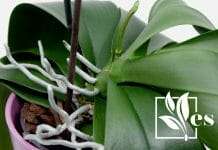Orchid buds not opening is a widespread problem among many species of these plants, and it can be a frustrating experience for new and seasoned gardeners alike. When buds fail to open and release their gorgeous, delicate orchid flowers, it can be a function of various factors.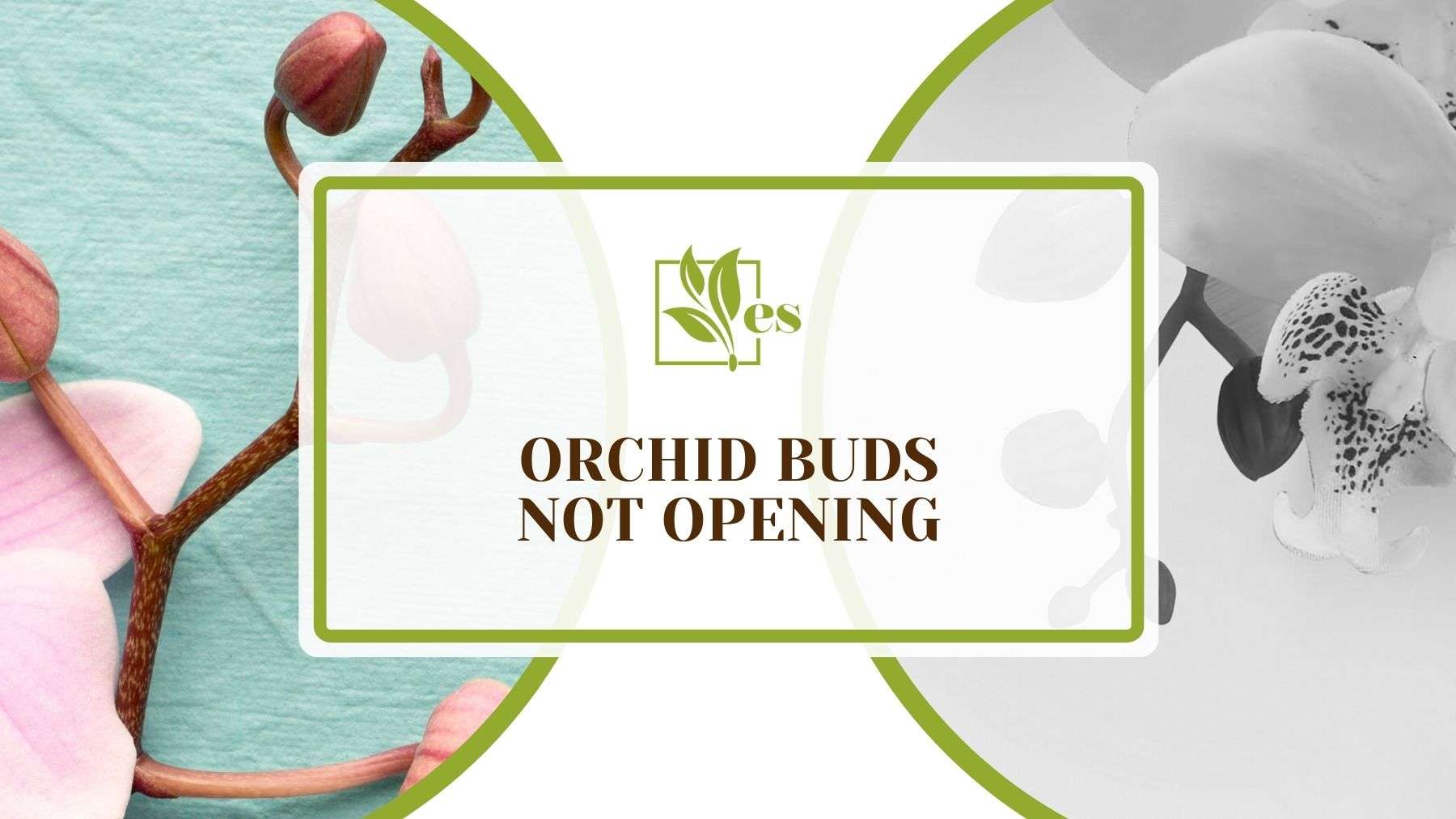
Thankfully, many of these problems can be easily rectified to improve the blooming process of your precious plants. Read on as we discuss the possible reasons for this anomaly and easy ways to fix the problem.
JUMP TO TOPIC
Why Are The Orchid Buds Not Opening?
The orchid buds are not opening due to insufficient light, excessive light, or temperature extremes. This can also happen due to insufficient soil moisture content, or even the contrary, excessive soil moisture content. Moreover, due to low humidity, pests, root problems, and the season.
– Insufficient Light
Light is essential for blooming. As a result, when there’s a shortage of it, your blooms buds may not open. While many orchid species will not tolerate total sunlight exposure, they still require bright light.
Orchids like Phalaenopsis orchids, also known as moth orchids, require bright but filtered light to bloom. This is why if you’re having problems with your plant’s buds opening, the most common cause is insufficient light, which deprives them of the ability to open up.
Also, problems with blooming can arise when you change the location of your plants from a highly bright space to a space with dim light. The major problem this will cause is a condition known as bud blast. 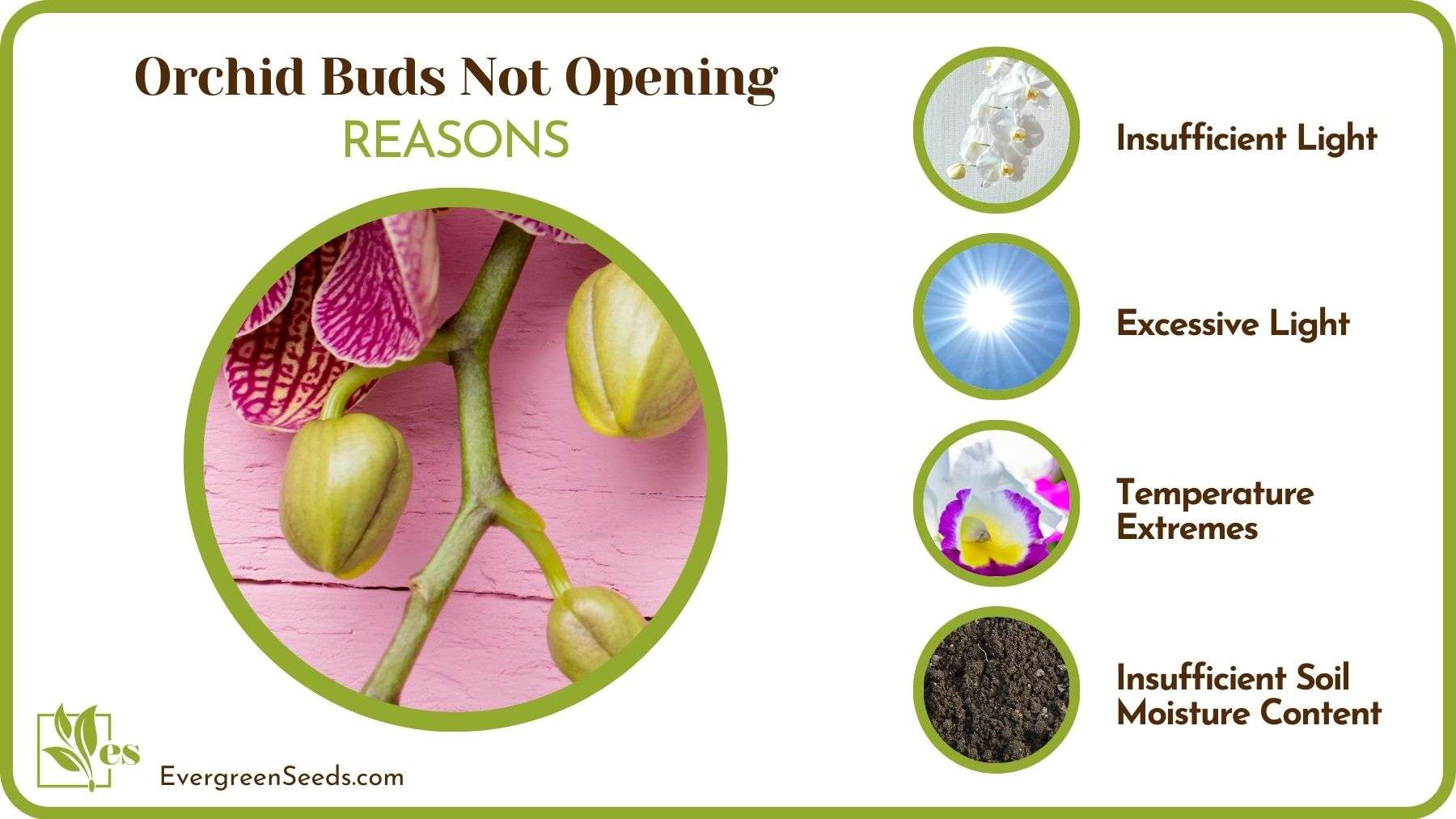
– Excessive Light
Extremes of any growing condition are typically bad for orchid plants so now the light in excess, whether natural or artificial, can be a problem for orchid blooms. On the one hand, excessive sunlight can cause bloom buds to wither and die before they can bloom, but you should be mindful that the prolonged or non-stop exposure of your plants to artificial lighting can suppress bud opening.
What happens is that the plants become accustomed to the constant bright light, missing their natural cue to bloom. So, the buds will remain that way, unopened, till they eventually fall off and die.
– Temperature Extremes
Too hot or too cold temperature conditions can cause your plant’s buds to remain closed. While orchids require slight temperature variations between their morning and night temperatures, too much of a shift can hinder blooming completely.
Additionally, if your orchid is constantly exposed to cold or hot drafts from open external doors or windows, the temperature shock from this can cause their buds to remain closed. Too hot or cold water or ice can cause buds to wither or give them the inability to thrive.
– Insufficient Soil Moisture Content
Orchids typically enjoy moist, well-draining soils or potting media. So, when the potting media becomes too dry, it can cause problems for your plants. For orchids that require little moisture content, it can be very easy to let them get extremely dry in a bit not to overwater them, resulting in poor flowering and orchid buds dying before opening.
If you notice this on your orchids, it’s best to put corrective measures in place, so you don’t lose all your flower spikes completely. Overwatering might also cause the orchid to get brown stems or even white spots on leaves.
– Excessive Soil Moisture Content
Excessive soil moisture content means too much water in the soil or potting media, depending on the type of orchid you’re growing. While many orchid species love frequent and consistent watering, they hate when they are waterlogging, which can happen if the soil moisture content is not controlled as the moisture level rises.
Interestingly, waterlogging leads to root rot, resulting in your orchid’s inability to absorb water from the soil. This becomes a problem because it’ll take from the buds in your plants’ quest to find a new water source, causing dehydration and bud blast.
– Low Humidity
Low humidity is another condition that could be affecting your plants’ buds. Orchids generally require medium to high humidity levels to thrive, especially during their flowering season. A drop or fluctuation in the humidity levels will lead to the flowers fall before they bloom. This can happen when you move your orchids through locations with different humidity levels.
– Pests
Pests, especially the insect kind, are another apparent reason for your orchid flowers not opening fully. Many of these pests feed on the buds of orchids by sucking all the nutrients out of them, which influences the natural blooming process.
Thrips and Aphids are the most popular pests that can cause significant damage to your plant’s buds. These two culprits are important pests to look out for if you notice your plant’s buds falling prematurely or your plants produce deformed flowers and this way they will hinder the success.
– Root Problems
Root problems can occur as a result of various reasons, including overwatering, lack of sufficient oxygen, and decreased fertilization, which ultimately results in your plants’ buds dying. The problem of insufficient oxygen happens when your plant’s potting media begins to break down over time or when you use a soil mix without proper air circulation to grow orchids. 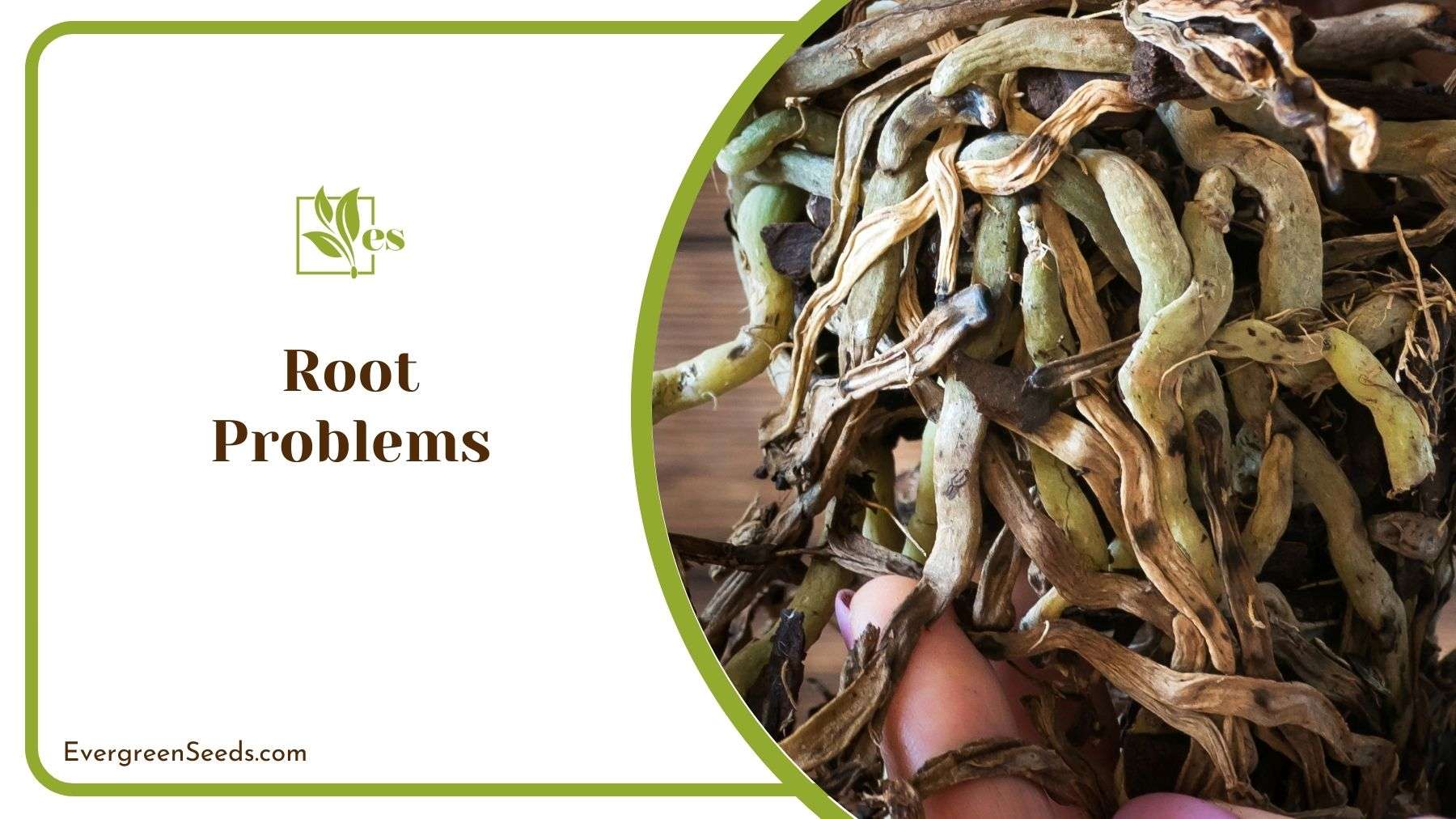
As a result, the orchid roots start to suffocate, leaving it without enough energy to bloom properly. Also, reduced fertilizing frequency or concentration can cause root problems because they would weaken. When your orchids aren’t getting enough nutrients, there’s a very high likelihood that they’ll not bloom properly because of a lack of energy.
– Seasonal Changes
If your buds aren’t blooming, you’re probably impatient because they won’t blossom up when it is not the right season. Each orchid species has a season or time of the year it’s most likely to bloom. It’s definitely different for many orchid species.
What Are Solutions for Orchid Buds That Are Not Opening?
The solutions for orchid bugs that are not opening are changing the lighting around the plant, or adjusting the surrounding temperature. You must also place it in a well-draining soil, but when it lacks moisture, aim to mist around it, and make sure to tackle the pests.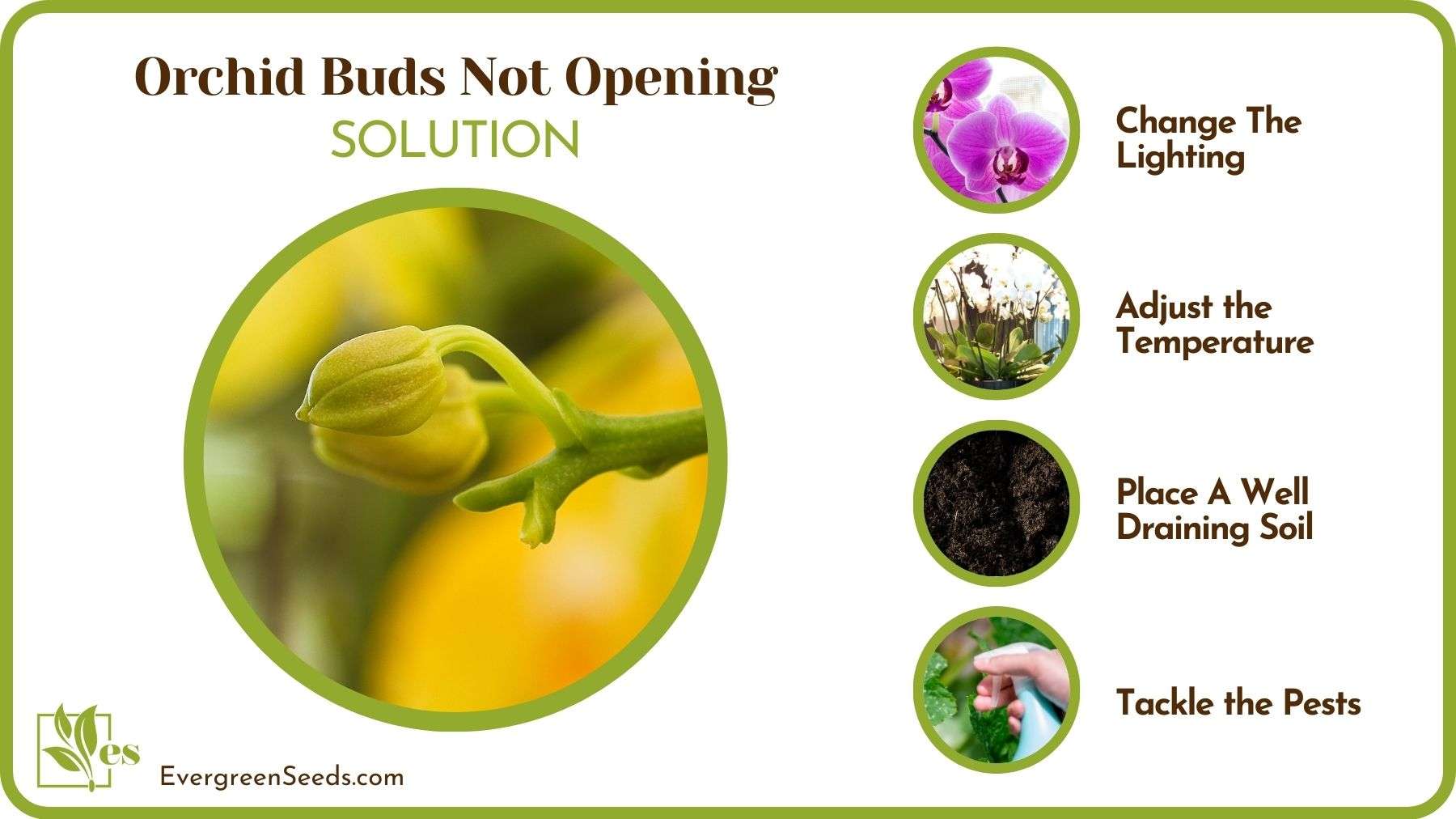
– Change The Lighting
Naturally, when the problem is insufficient light, you should do the opposite and give your plants more light. Bright, filtered light is ideal for most orchid species. So, if you suspect your orchid isn’t blooming as a result of insufficient light, change its location to a place where it’ll receive ample indirect sunlight.
To counter the effects of excessive sunlight on blooms, you can move your plants to a different location where they’ll get bright but indirect light. Also, suppose you’re growing your orchids indoors under artificial light if the lighting isn’t sufficient for them.
In that case, there’s a need to regulate the light to simulate the natural daytime and night-time process, as they are important in stimulating blooming. You can use a timer, if you must, to relieve you of the stress and the excess of light.
– Adjust the Temperature
Check that your orchids are far away from heat or cold-generating materials like air conditioning systems, heaters, and ovens. You should also place them away from open windows or external doors that can bring in hot or cold drafts. Additionally, be sure to water your plants with water that isn’t too hot or cold to prevent temperature shock.
Night-time temperatures should be slightly lower than daytime temperatures; at most, there should be a difference of 10 degrees Fahrenheit. Suppose you notice that your plants’ buds stay closed even during its blooming season.
In that case, you should check the location for things that can cause sudden extreme temperature fluctuations, like heaters and air conditioning systems. The rule also applies to the temperature of the water you give to your plants.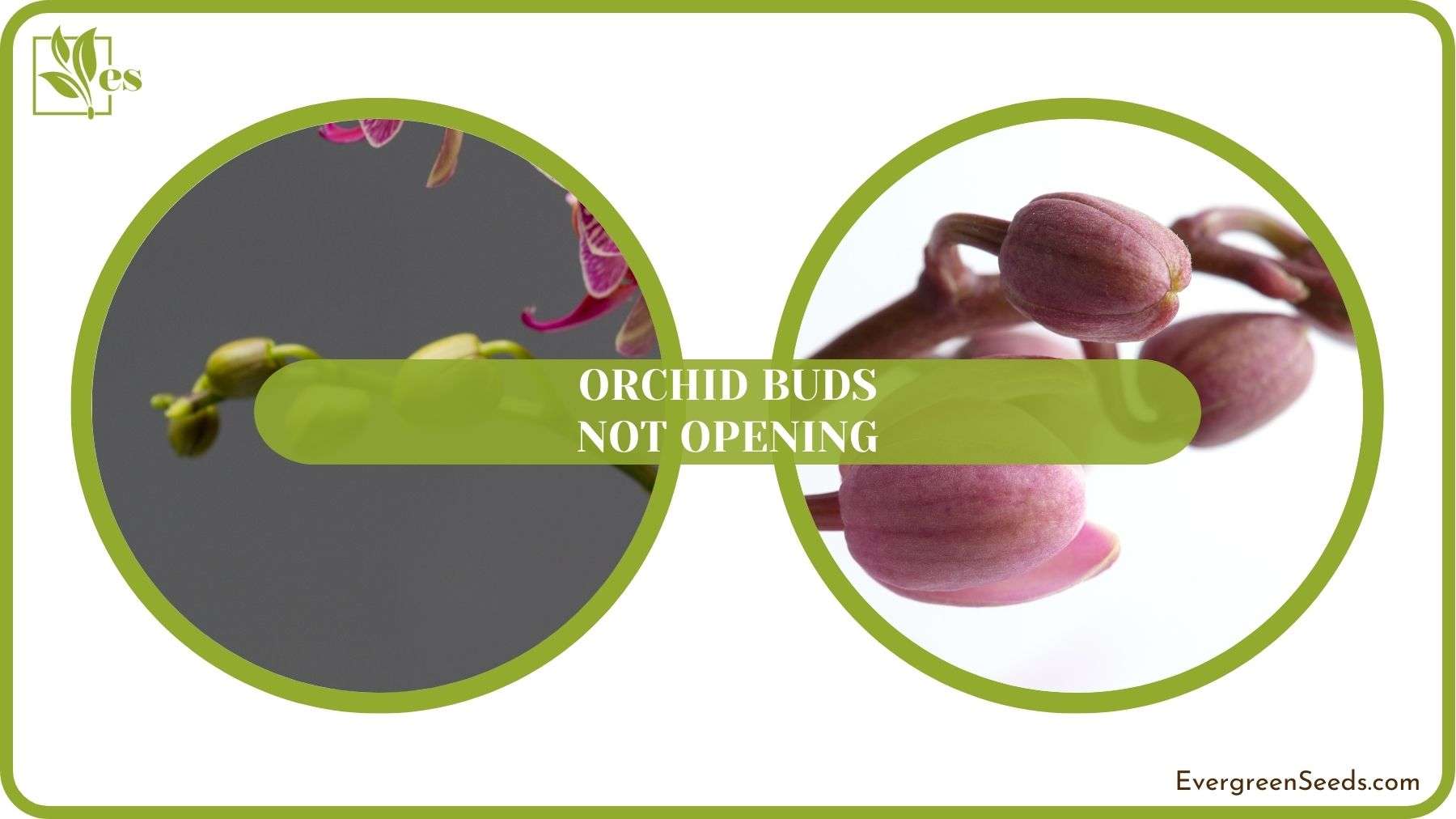
– Place A Well-draining Soil
The type of potting media you use to grow your orchids plays a considerable role in how much moisture will be retained. If you aren’t using a potting medium that drains well but still retains enough moisture for your plants, you should consider changing it.
Typically, a well-draining potting media ensures a free and proper flow of water to prevent waterlogging. Also, you can increase your watering frequency and give your plants more water to aid blooming. Be careful, as the goal is to avoid overwatering them, which will lead to even more problems.
Orchid care is relatively easy, but sometimes mistakes can happen. In a bid to give your plants sufficient water, you can end up overwatering them. There’s no need to fret, though, as this is easily rectifiable.
You must allow the potting media to dry out properly and reduce your watering frequency. Ideally, it would be best to tailor your plant’s watering needs to its species, pot size, potting medium, and environment.
– Aim To Mist Often
You can keep your plant’s humidity levels from going low by constantly monitoring them and finding ways to keep them up. One such way is by misting your orchids regularly with water using a spray bottle.
While this works great to keep humidity levels up, the ideal solution is to get a humidifier with a timer feature to ease the stress. You can also relocate your plants to a more naturally humid location if you’re growing them indoors.
– Tackle the Pests
Pests are generally an unavoidable problem with growing orchids, so make sure to get rid of them when you see any. However, there are ways to eliminate them when they appear. It’s best to deal with them as soon as you notice them to prevent their spread which will cause more damage.
The most common pests that attack buds, like thrips and aphids, will respond to appropriate chemical treatments like pesticides and insecticides. This is why you should ensure that whatever chemical you intend to use is safe for your plants. It’ll help if you repeat the treatment until all traces of the insect pests are gone to prevent them from returning.


